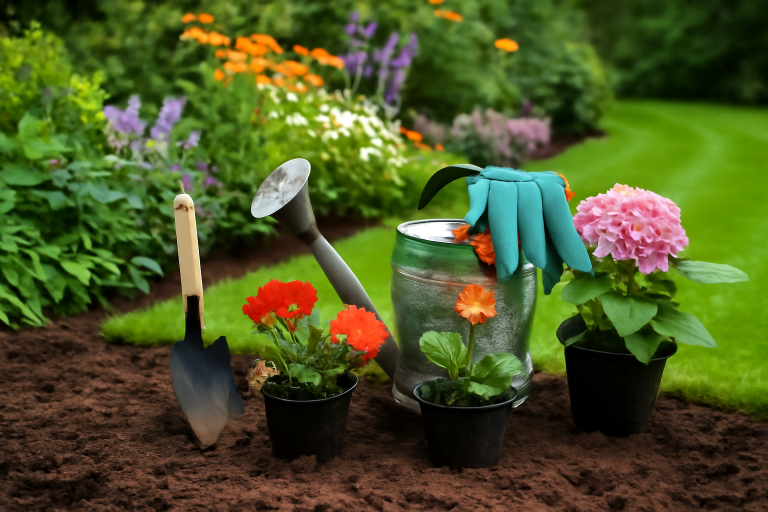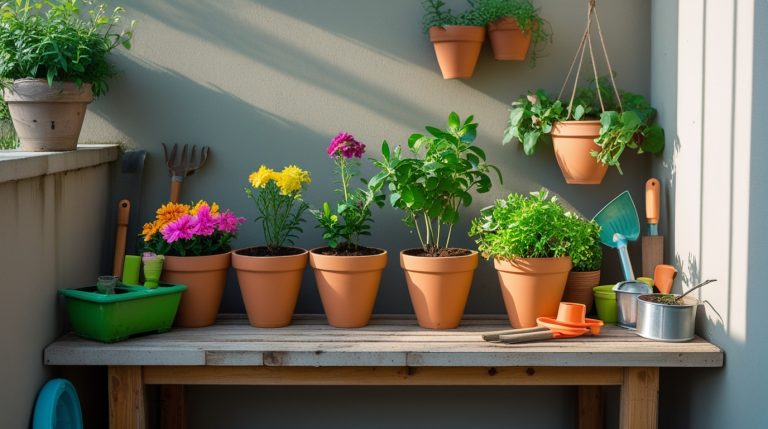

Gardening is a wonderful way to bring life and color to any space, but what if you don’t have a large yard? Starting a garden in small spaces is not only possible, it can be highly rewarding! Whether you’re in an apartment, on a small balcony, or even a window sill, you can enjoy the beauty of plants. Here’s your complete guide to starting a garden in small spaces, with tips for beginners.
Before you begin, it’s important to assess the space you have. Even in a small area, understanding the conditions is key to choosing the right plants and maximizing your space.
The amount of sunlight your space receives is one of the most important factors to consider. Does your space get full sun throughout the day, or is it more shaded? Some plants thrive in direct sunlight, while others prefer indirect light.
Consider the layout of your space. Make sure there is enough room for pots, containers, and gardening tools without overcrowding the area. Smaller spaces require creative solutions, like hanging planters, window boxes, or stacked pots.
If you have a balcony or window garden, ensure the safety of your plants by securing them in a way that prevents them from falling over. Consider using sturdy pots and containers with drainage holes.
The right plant selection will make all the difference in how your small garden thrives. Some plants are better suited for smaller spaces than others. Here’s a breakdown of plant types based on the amount of sunlight your space gets.
If your space receives lots of direct sunlight, consider sun-loving plants such as:
For spaces that receive some sun but not all day, consider plants that do well in partial shade, such as:
If your space is completely shaded, you can still grow a variety of plants, such as:
One of the best ways to make the most of your small space is by using pots and containers. This gives you flexibility in arranging your plants and even allows you to move them around if needed.
Look for pots that are appropriate for the size of your plants. Larger plants may need bigger pots with ample space for their roots. Remember to select containers with drainage holes to avoid water accumulation, which can cause root rot.
Utilizing vertical space is a great solution for small areas. Window boxes, hanging planters, and wall-mounted shelves are excellent for growing plants in a small garden. These not only save space but also add visual interest.
Get creative and use repurposed items like old cans, wooden crates, or even plastic bottles to create unique planters. This is an eco-friendly option that also adds personality to your garden.
The quality of the soil is critical to your plants’ success. Even in small spaces, you need to make sure the soil is fertile and has good drainage. Here are some tips:
Invest in good-quality potting soil. Plants grown in containers need nutrient-rich soil for healthy growth. You can add organic compost or slow-release fertilizers to improve the soil quality and provide your plants with the necessary nutrients.
Proper drainage is essential for container gardening. Make sure your pots have holes at the bottom, or add materials like pebbles to the base to prevent water from accumulating and to ensure that the soil drains well.
Taking care of plants in small spaces requires consistent attention, but it doesn’t have to be time-consuming. Here are some basic care tips:
Each plant has different water needs. Some plants, like succulents, prefer to dry out between watering, while others, like ferns, enjoy more moisture. Make sure to check the soil regularly and adjust your watering routine accordingly.
To keep your garden looking neat and promote new growth, regularly remove dead leaves or spent flowers. Some plants, like petunias, benefit from deadheading, which encourages further blooming.
Even in small spaces, pests can become an issue. Use natural pest control methods, like neem oil or soap spray, to avoid harming your plants and the environment. Regularly check your plants for signs of pest infestations.
Starting a garden in a small space can have numerous benefits beyond the aesthetic appeal. Here are some reasons why you should give it a try:
Starting a garden in a small space can be a fun and rewarding experience. With careful planning and the right plants, you can transform any small area into a thriving green oasis. Whether you’re looking to grow flowers, herbs, or decorative plants, gardening in small spaces is an opportunity to connect with nature and improve your surroundings.
So, take a step today and begin your gardening adventure in your own cozy space. There’s no limit to what you can create with a little creativity and care.